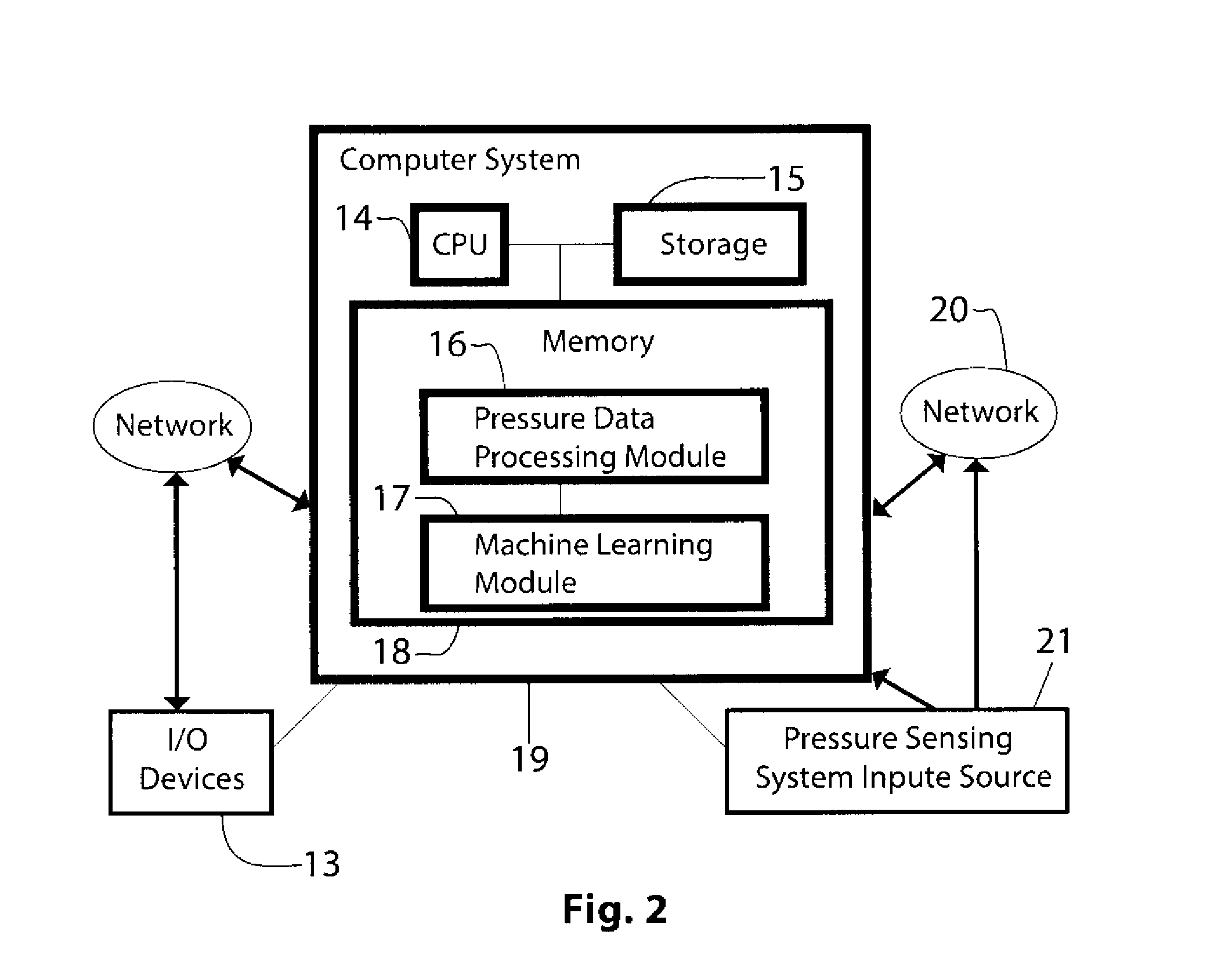Method and Apparatus to Infer Object and Agent Properties, Activity Capacities, Behaviors, and Intents from Contact and Pressure Images
a technology of contact and pressure image, applied in the field of system to acquire and analyze pressure contact pattern, can solve the problems of practical limitations of sensing apparatuses that can make inertial measurements of movement and activity attached directly to objects, and achieve the effect of fast analysis and output, and minimizing the overhead of analysis resources
- Summary
- Abstract
- Description
- Claims
- Application Information
AI Technical Summary
Benefits of technology
Problems solved by technology
Method used
Image
Examples
Embodiment Construction
[0076]Referring now to the drawings wherein like reference numerals refer to similar or identical parts throughout the several views, and more specifically to FIGS. 2 and 5 thereof, there is shown an apparatus 100 for determining a non-apparent attribute of an object 41. The apparatus 100 comprises a sensor portion 21 with which the object 41 makes contact and to which the object 41 applies pressure. The apparatus 100 comprises a computer 19 in communication with the sensor portion 21 that receives signals from the sensor portion 21 corresponding to the contact and pressure applied to the sensor portion 21, and determines from the signals the non-apparent attribute. The apparatus 100 comprises an output 11 in communication with the computer 19 that identifies the non-apparent attribute determined by the computer 19.
[0077]The object 41 may be a person, the non-apparent attribute may be a cognitive capacity decline, the sensor portion 21 may be a plurality of sensor tiles forming a wa...
PUM
| Property | Measurement | Unit |
|---|---|---|
| pressure | aaaaa | aaaaa |
| surface pressure | aaaaa | aaaaa |
| space-time | aaaaa | aaaaa |
Abstract
Description
Claims
Application Information
 Login to View More
Login to View More - R&D
- Intellectual Property
- Life Sciences
- Materials
- Tech Scout
- Unparalleled Data Quality
- Higher Quality Content
- 60% Fewer Hallucinations
Browse by: Latest US Patents, China's latest patents, Technical Efficacy Thesaurus, Application Domain, Technology Topic, Popular Technical Reports.
© 2025 PatSnap. All rights reserved.Legal|Privacy policy|Modern Slavery Act Transparency Statement|Sitemap|About US| Contact US: help@patsnap.com



